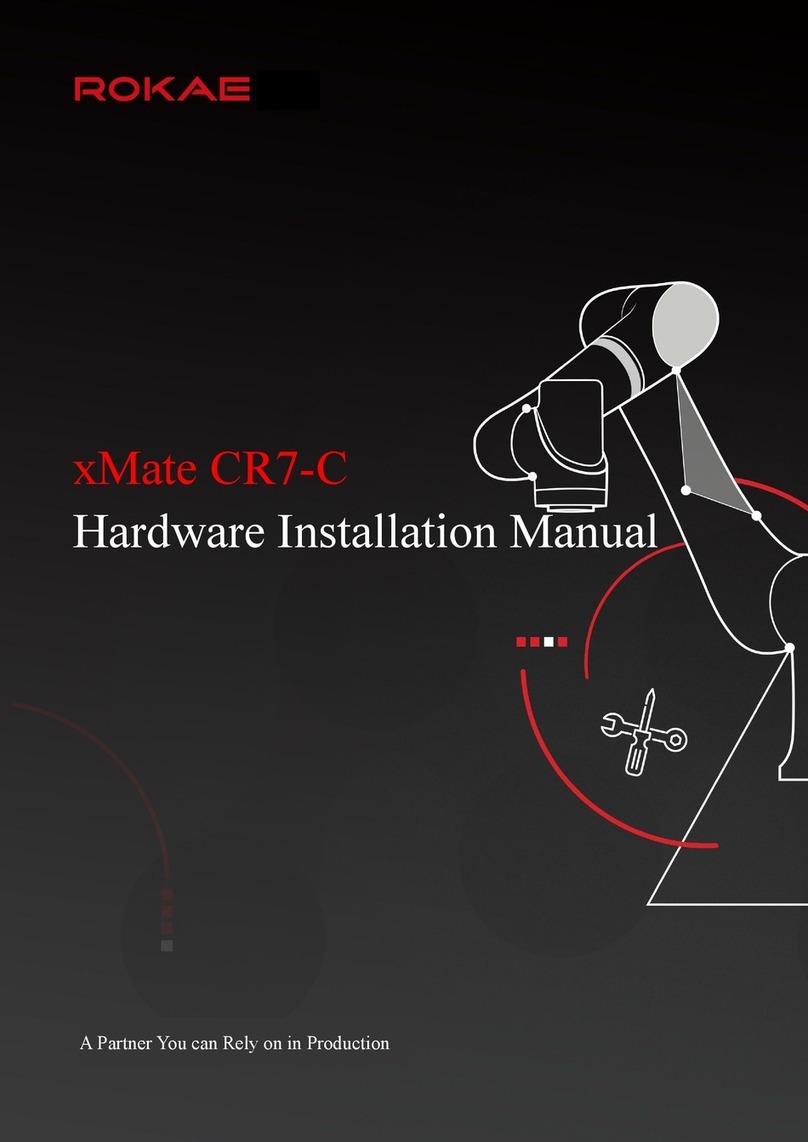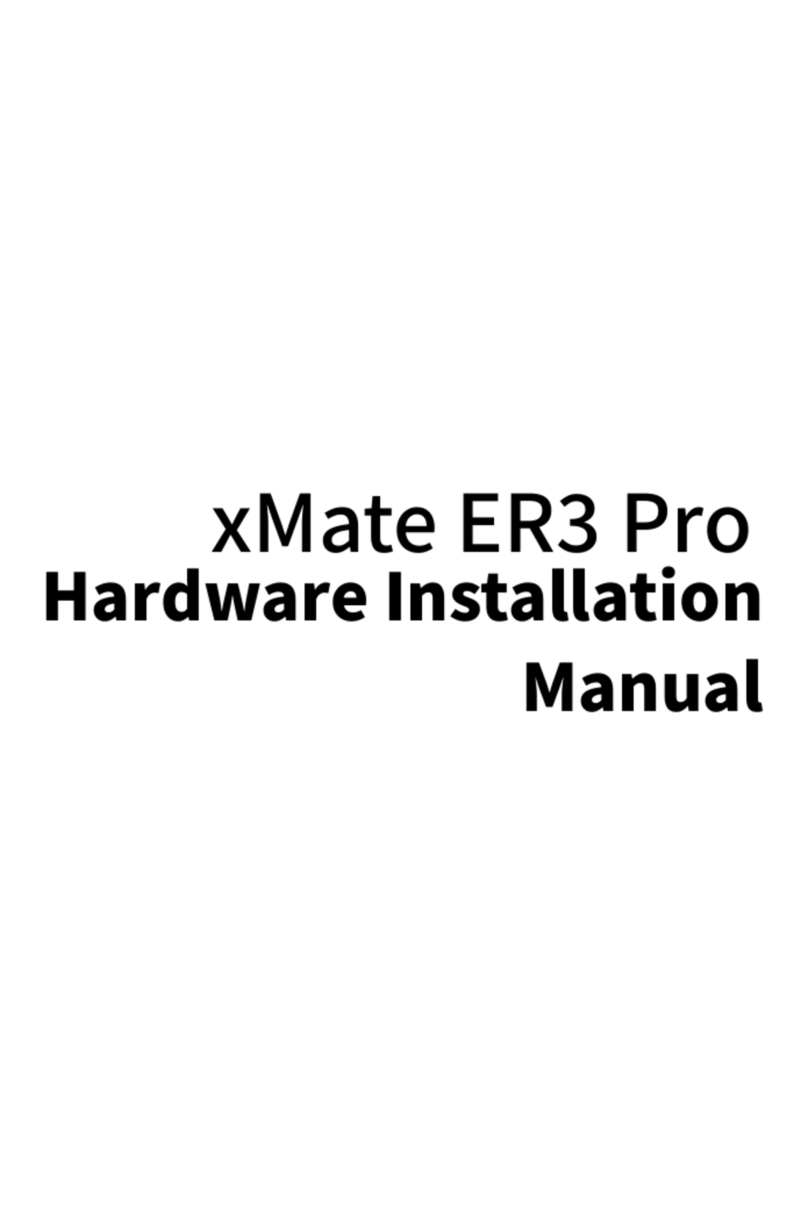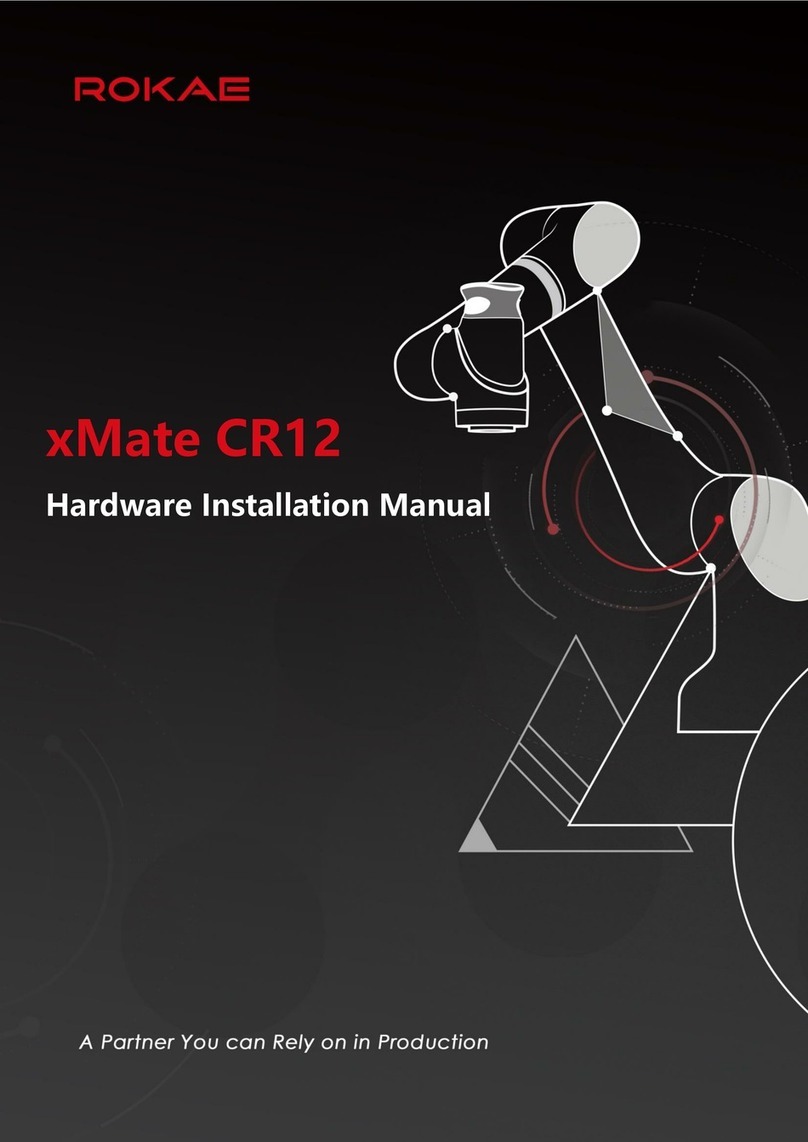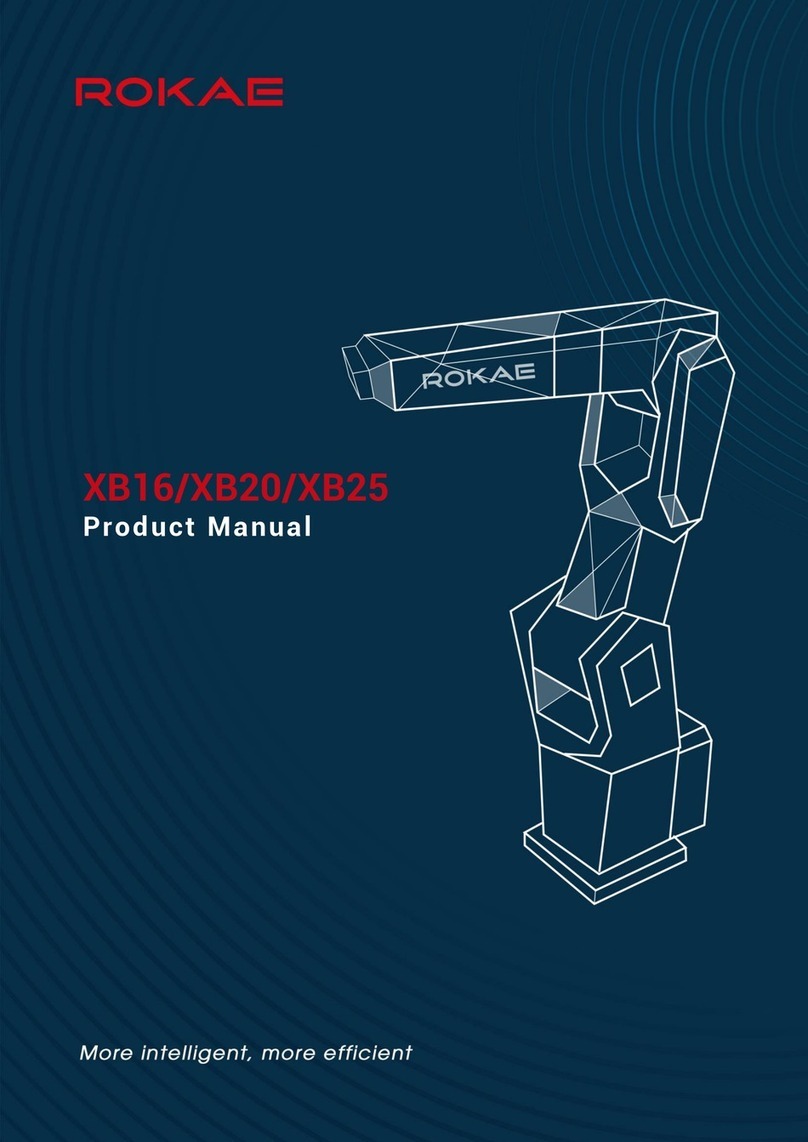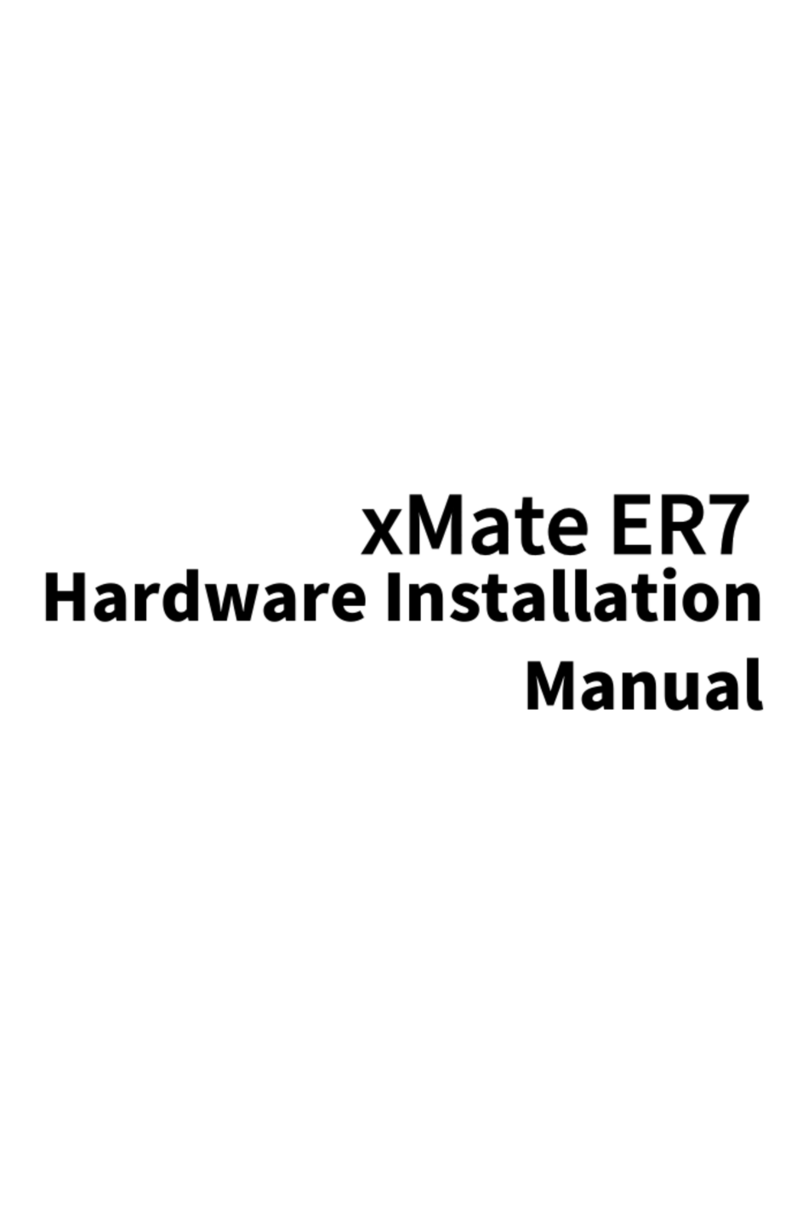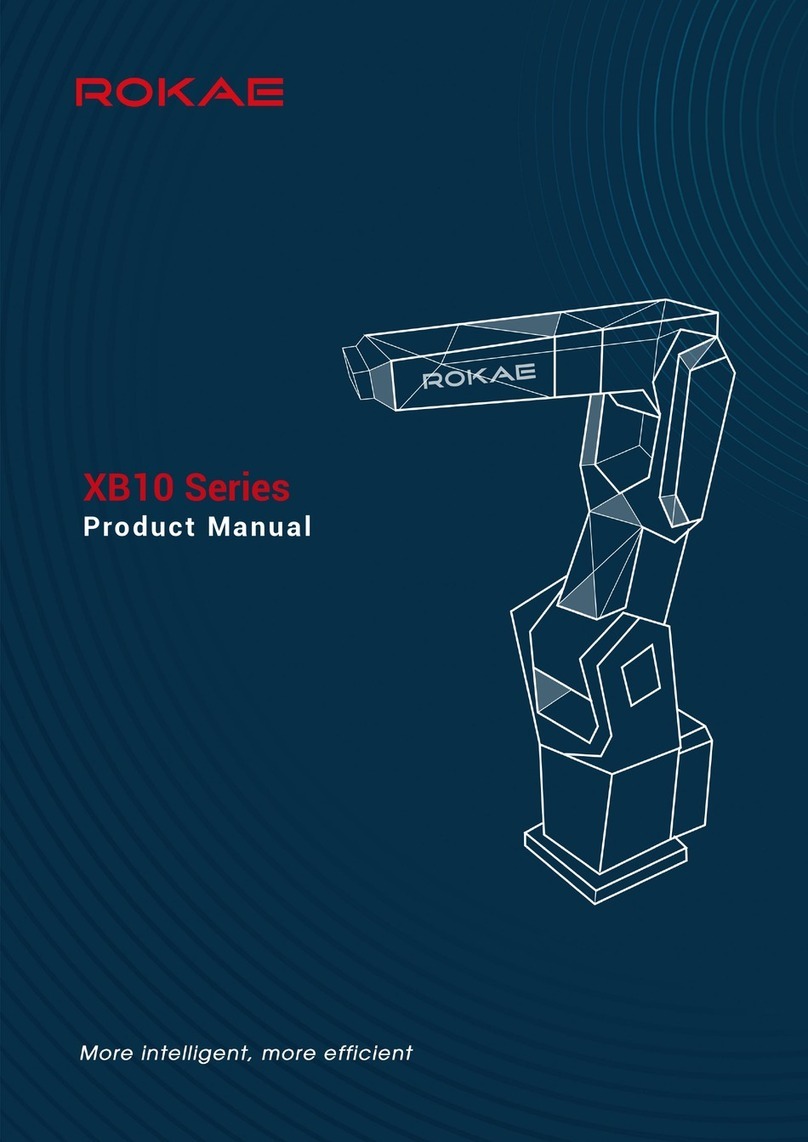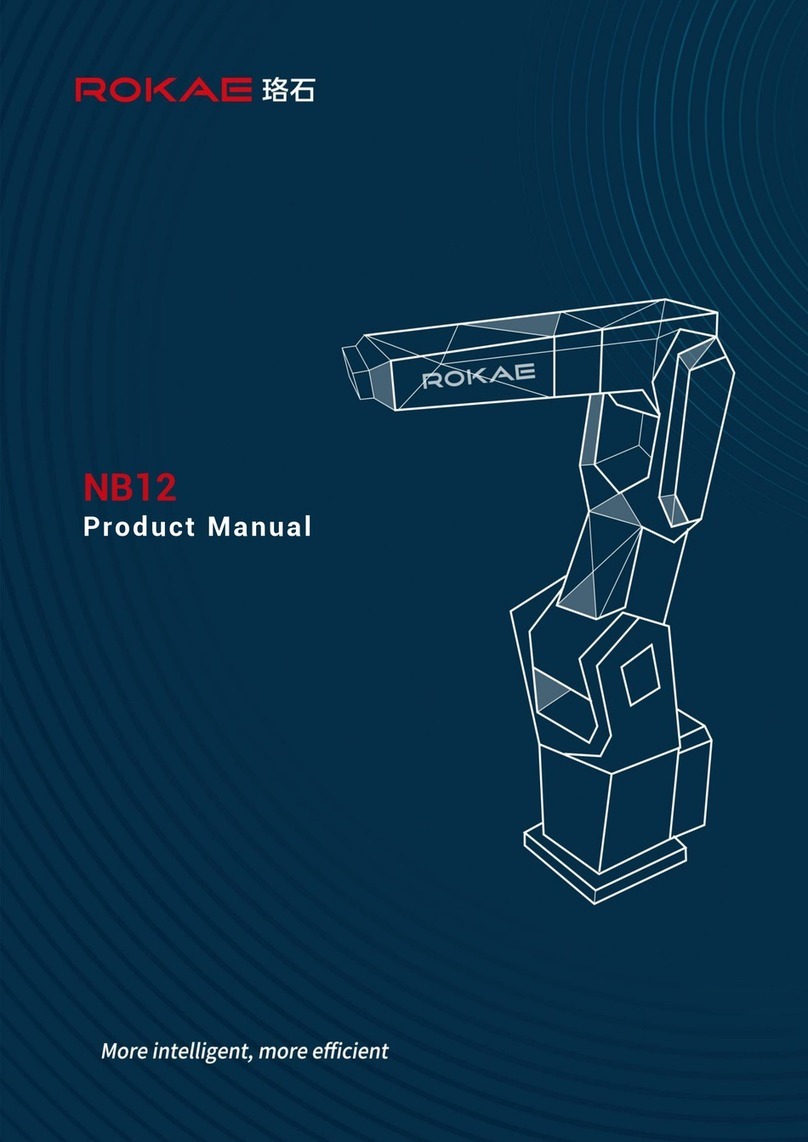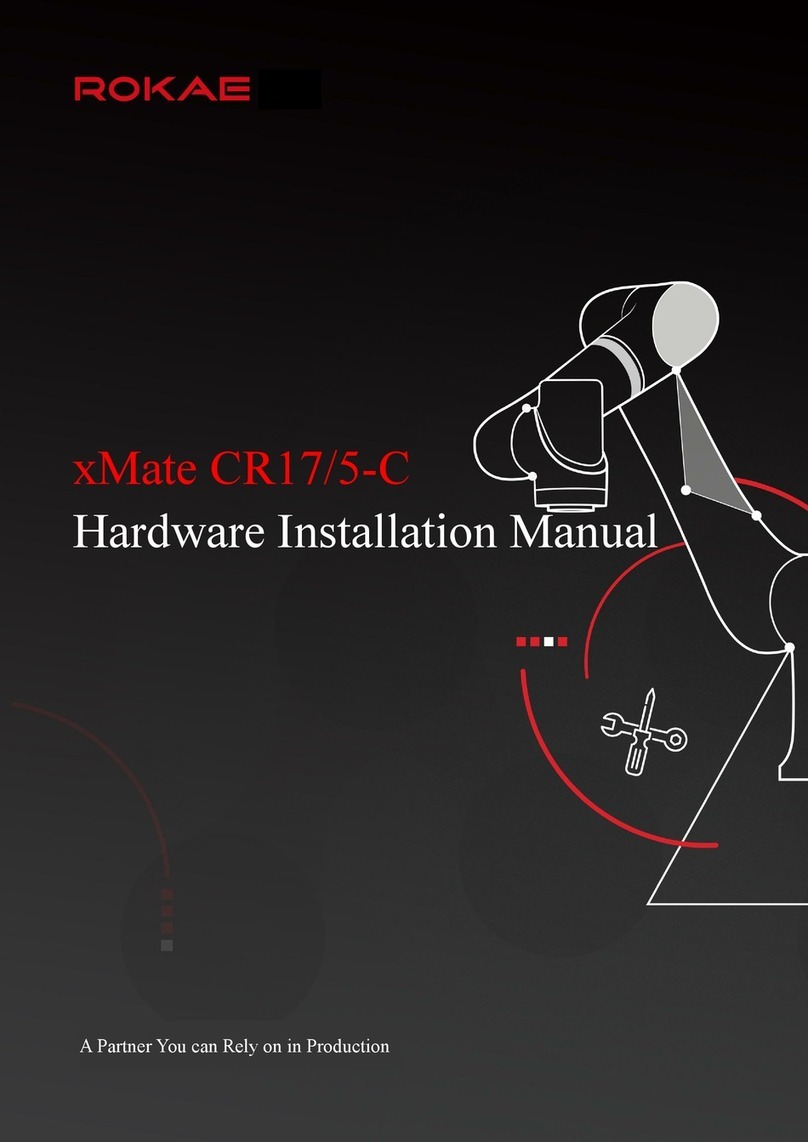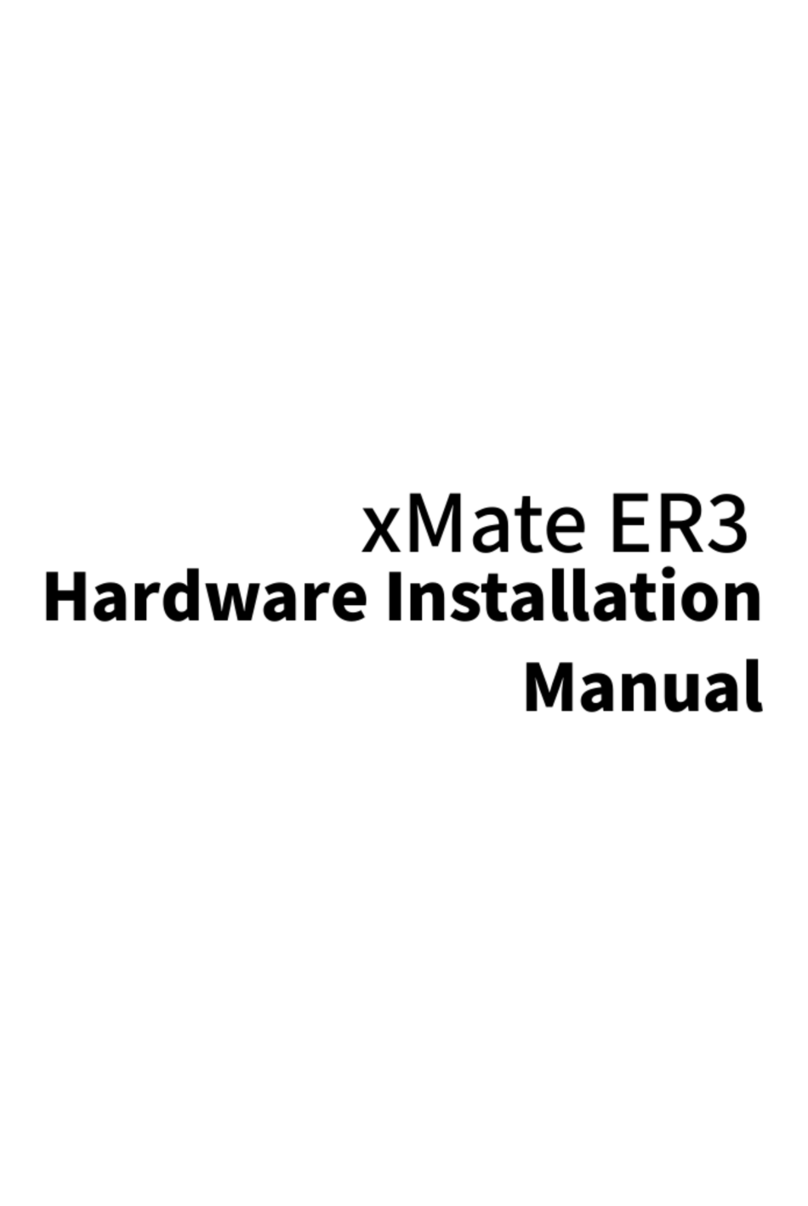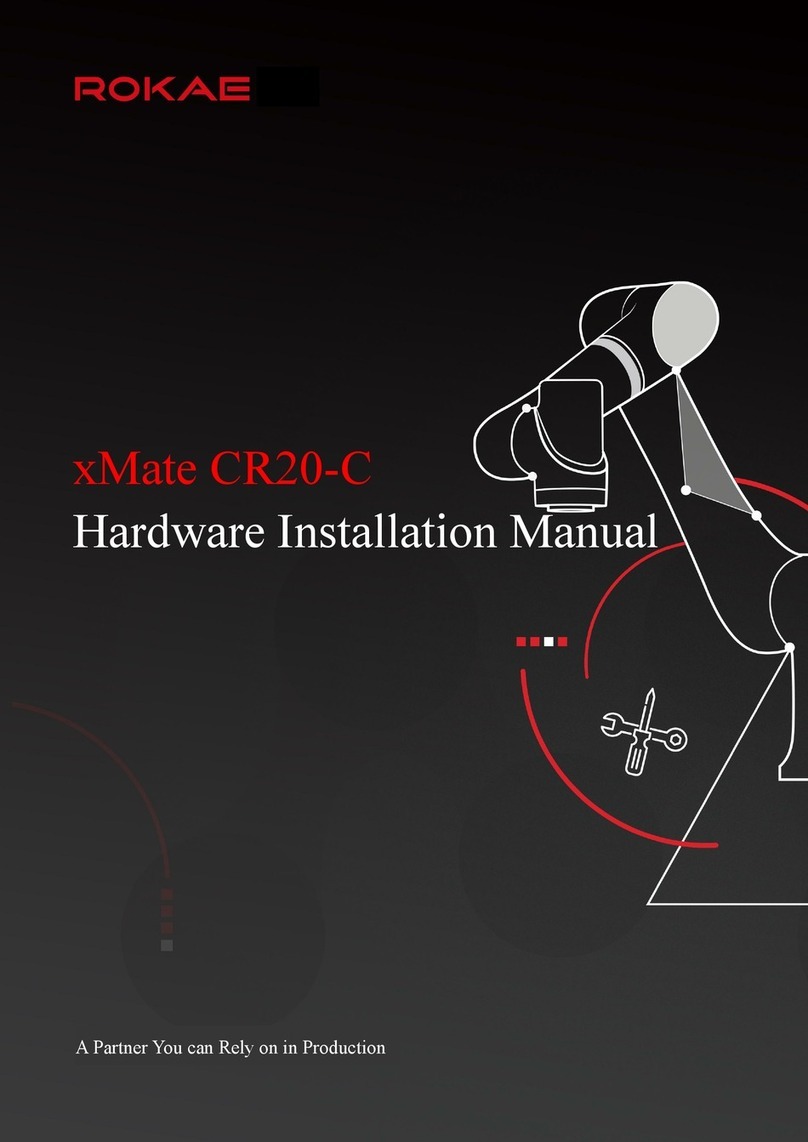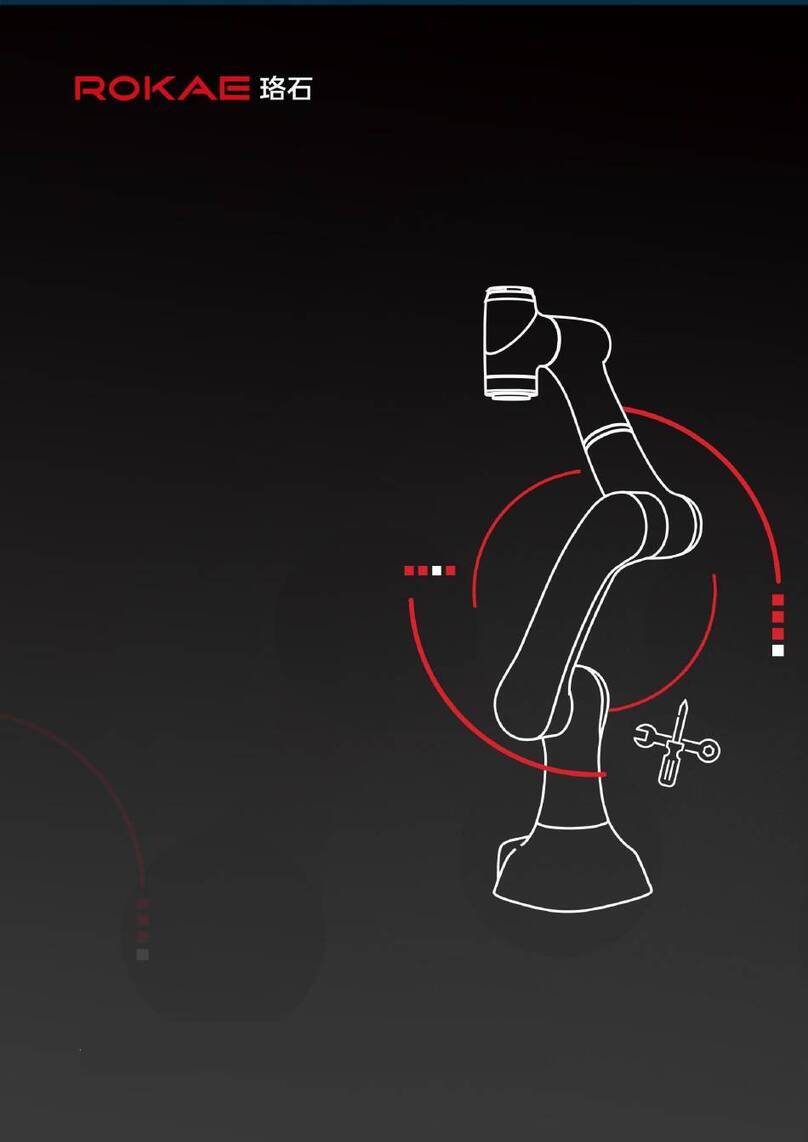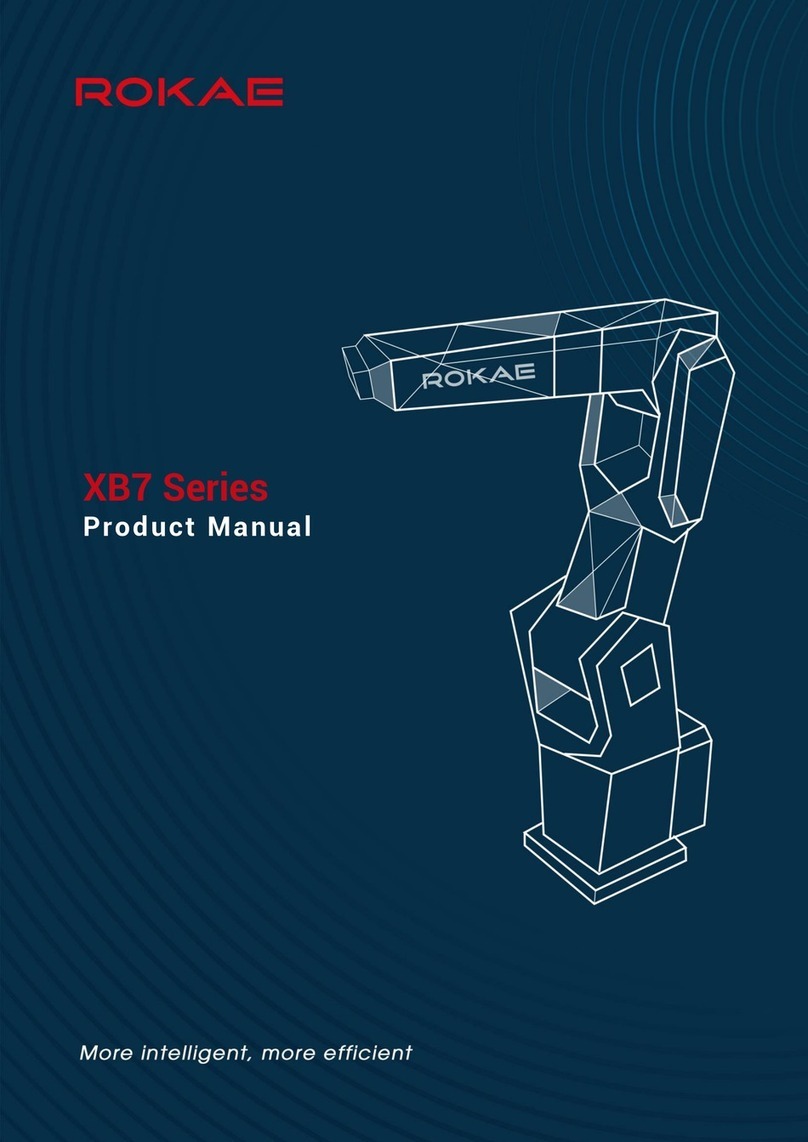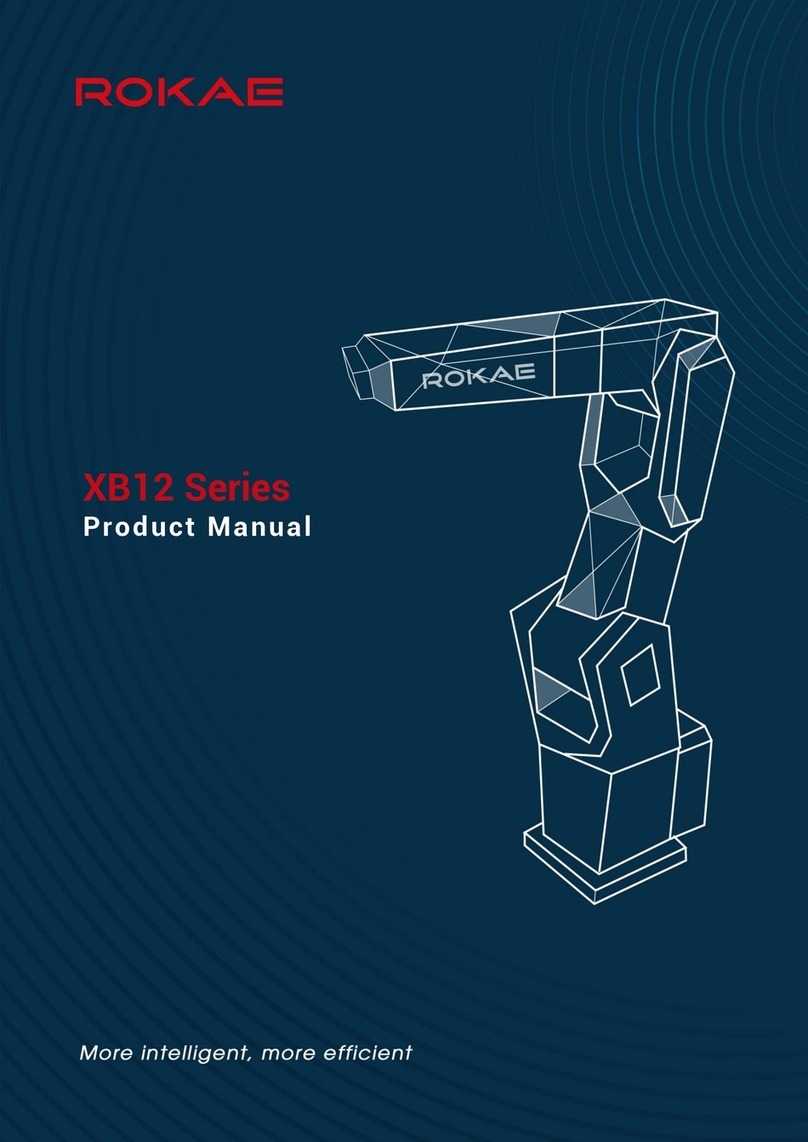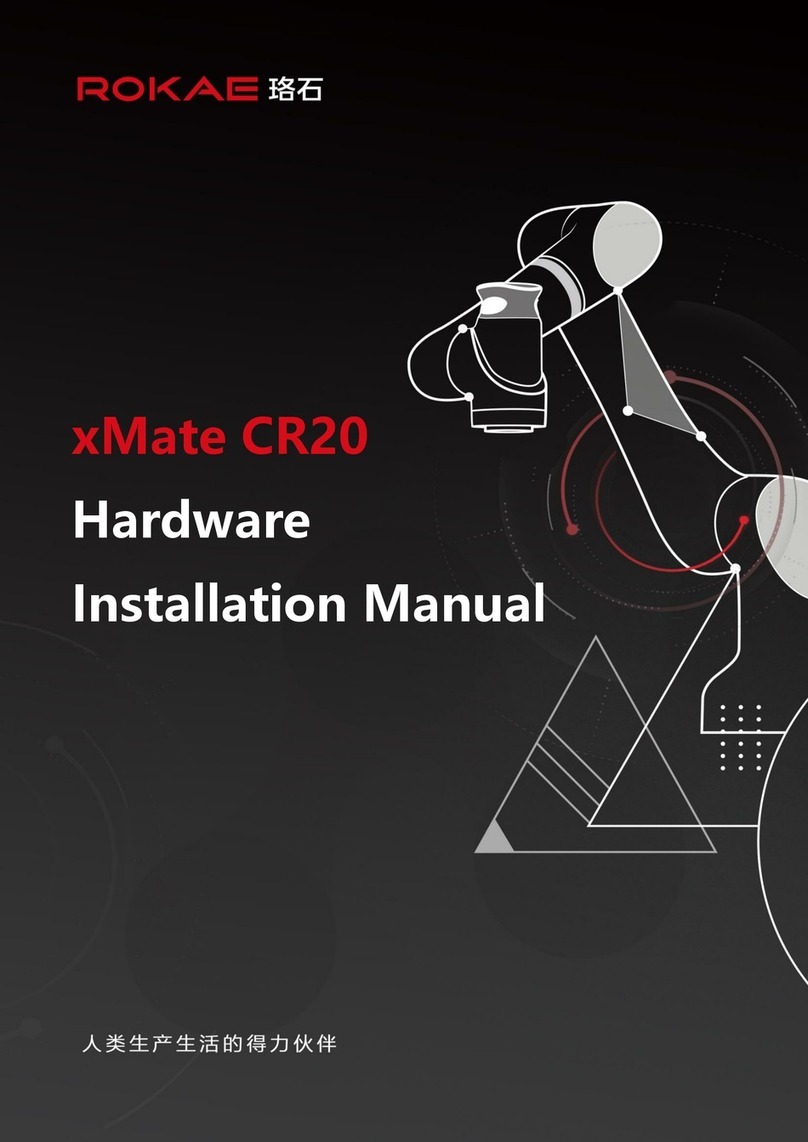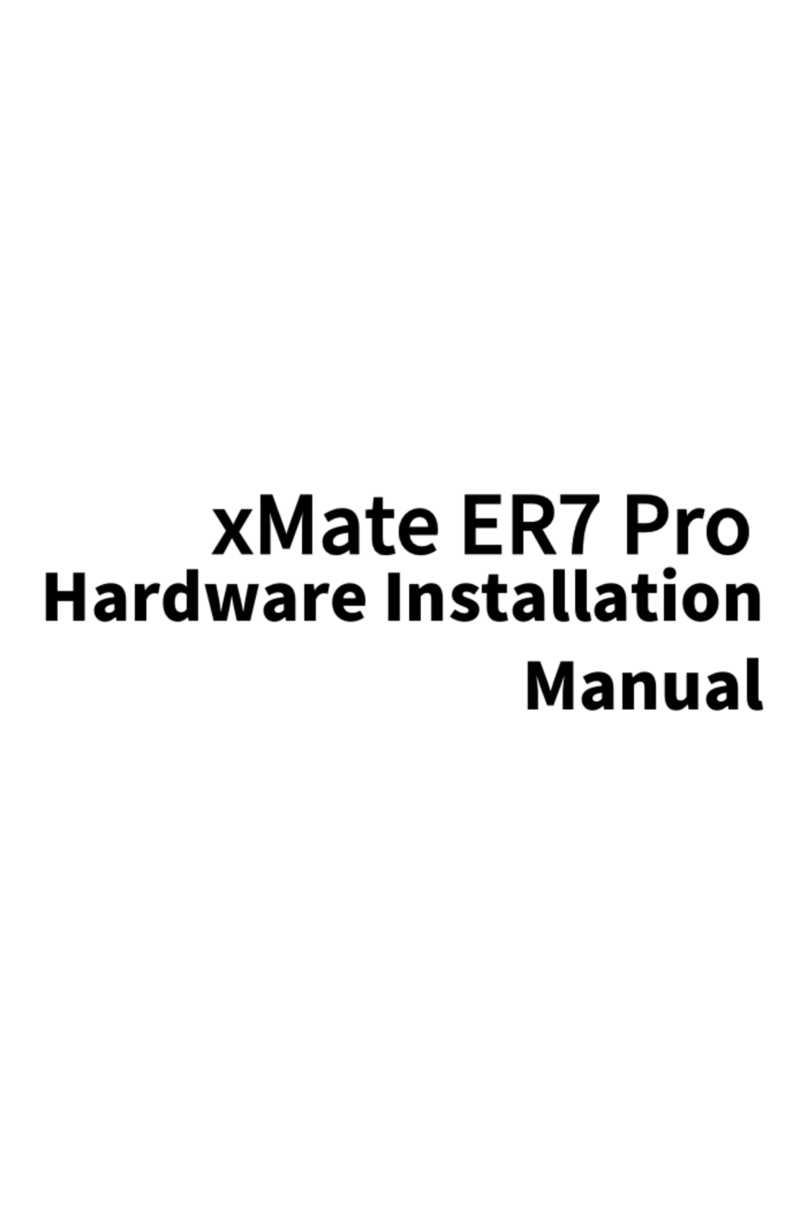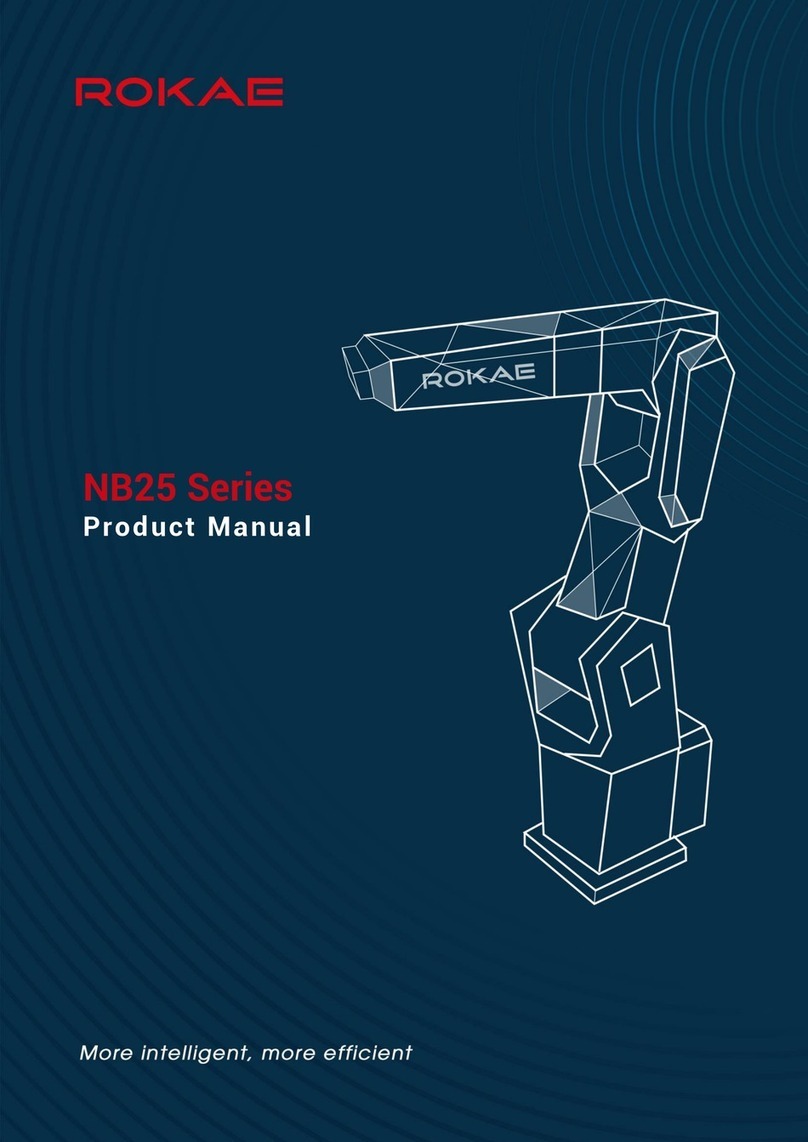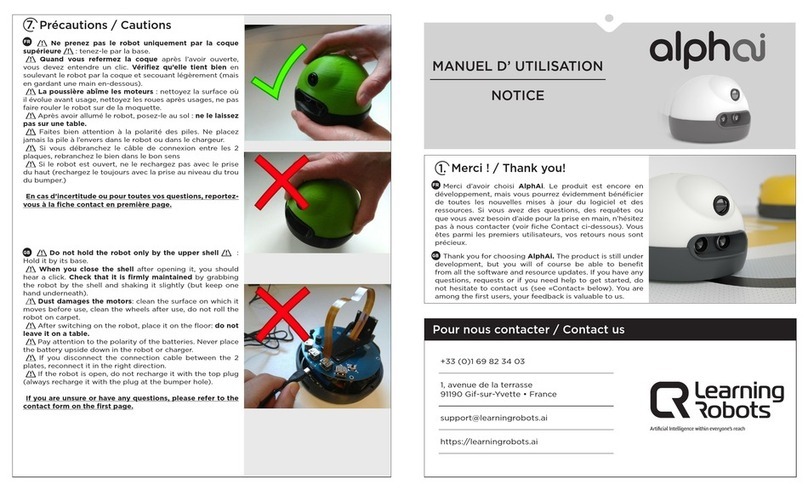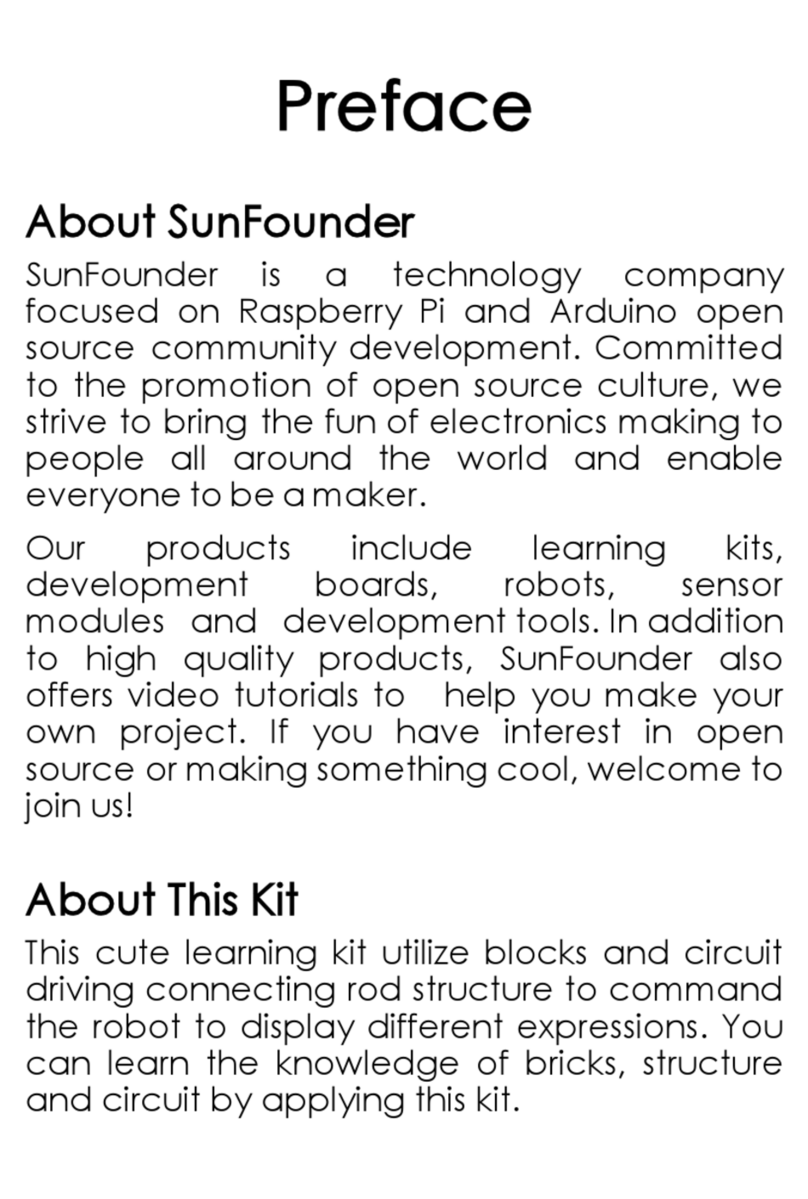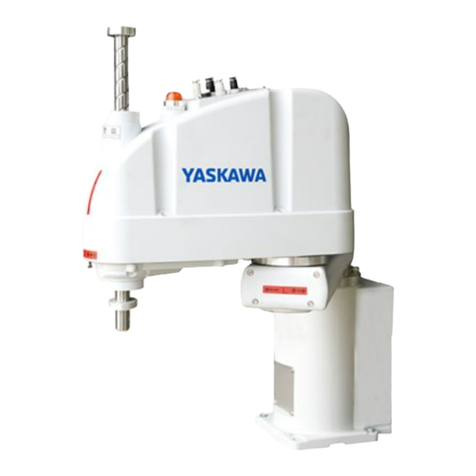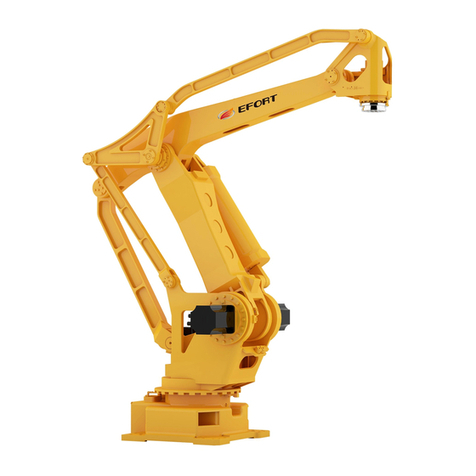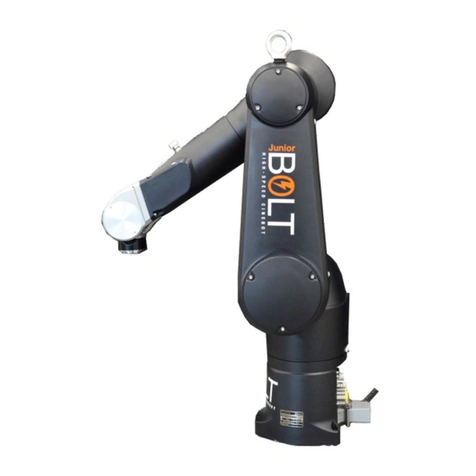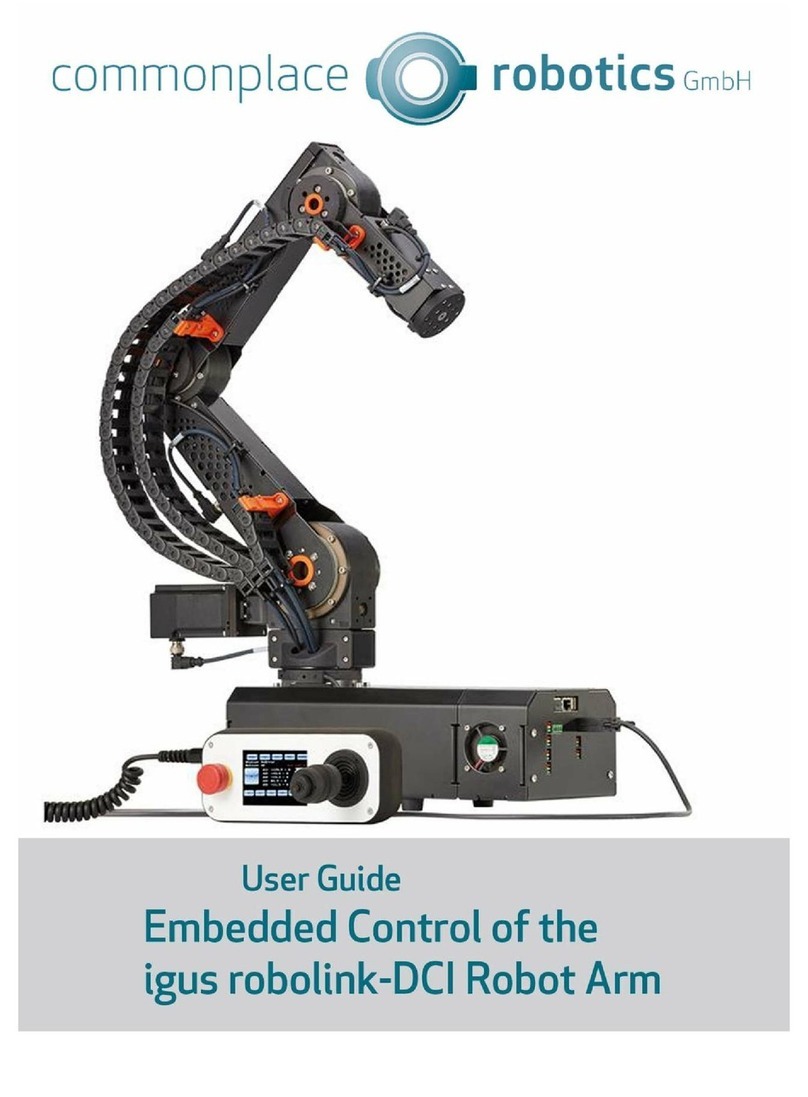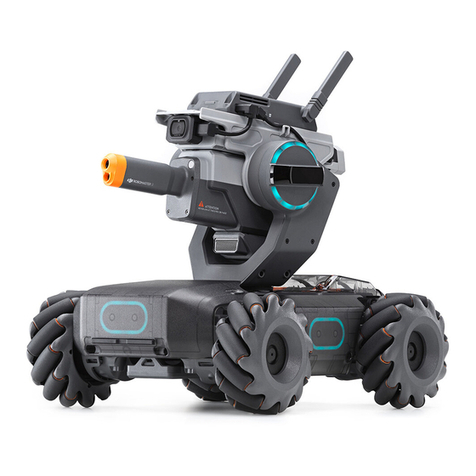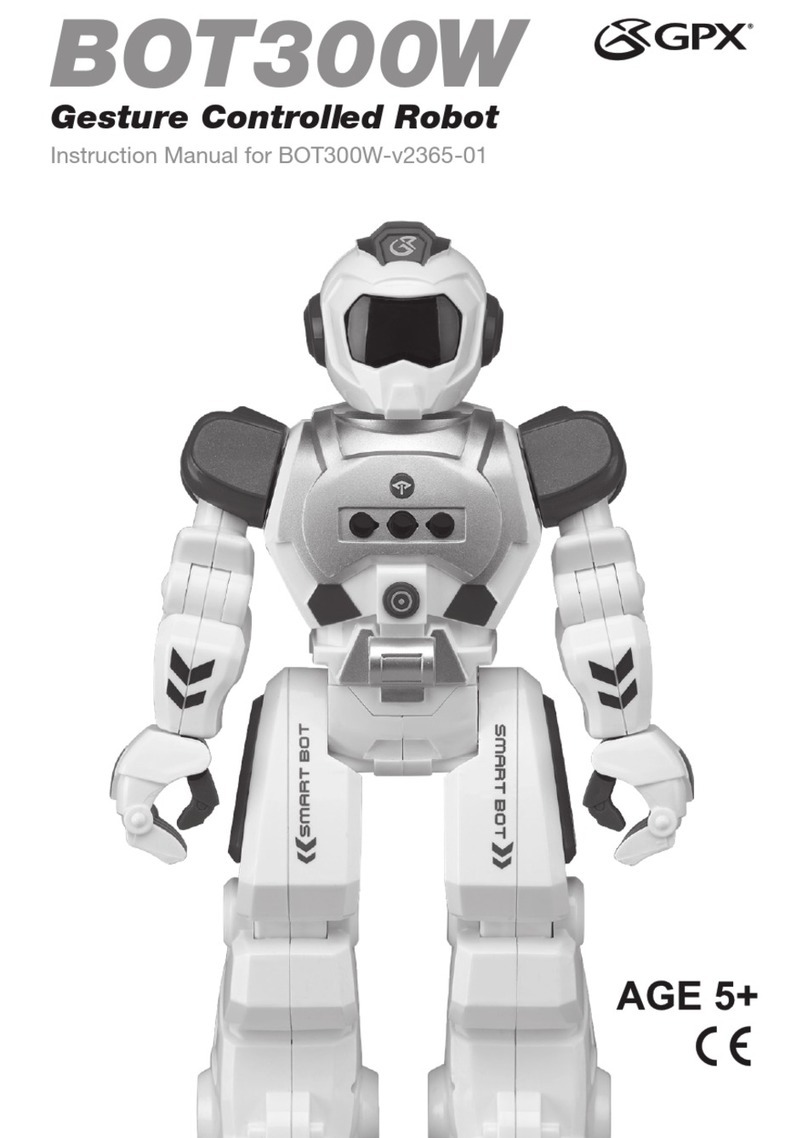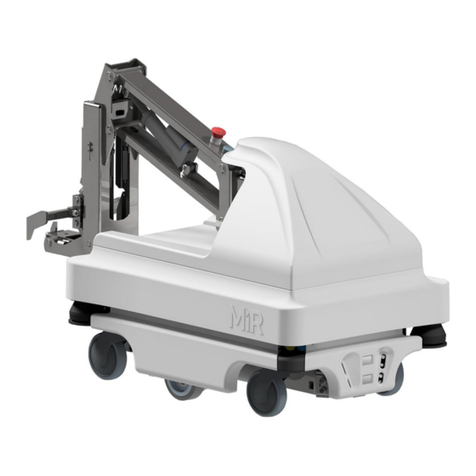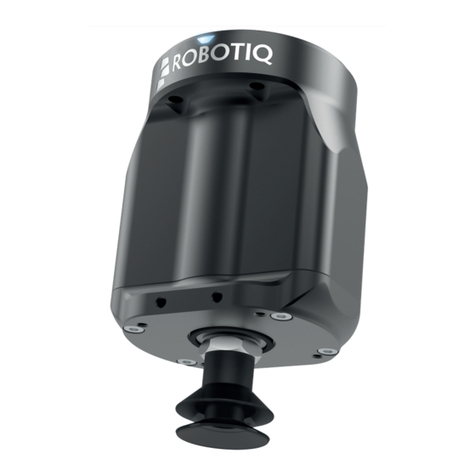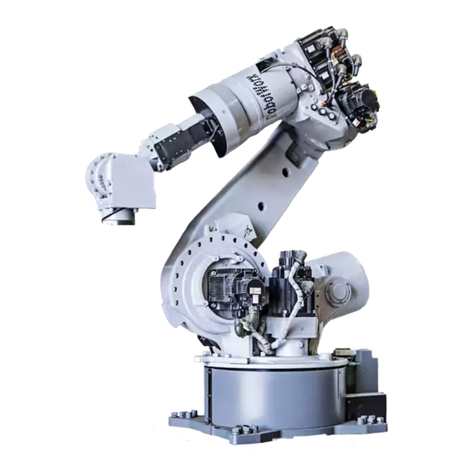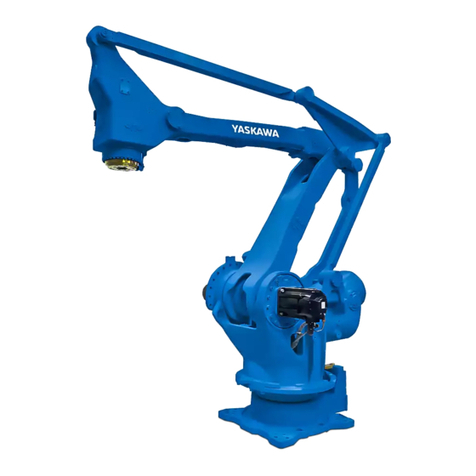2 Safety
NB220 Series Product Manual 9
However, it cannot cover each specific circumstance due to limited space.
2.3.2 About the user's own safety
2.3.2.1 Basic principles
To ensure safety when using the robot, the following principles must be observed strictly:
⚫The personnel are only allowed to operate the robot in manual mode when they
are within the safety zone of the robot.
⚫You should hold the Teach Pendant in your hands when entering the safety zone
of the robot to ensure that the robot is under your control.
⚫Pay attention to the active tools installed on the robot, such as the electric drill
and electric saw. Make sure that all these tools have stopped running before you approach
the robot.
⚫Pay attention to the workpiece surface or the robot arm body. The motor and
casing temperature of the robot may become very high after prolonged work.
⚫Pay attention to the gripper of the robot and the objects gripped. If the gripper is
opened, the workpiece may fall off and cause personal injury or equipment damage.
Moreover, the gripper used on the robot may be very powerful and may cause injury if it is
not used according to the specification;
⚫Pay attention to the electrical components in the robot control cabinet. Even if
the power supply has been switched off, the remaining power in the component is still
very dangerous.
2.3.3 Safety precautions for operating the Teach Pendant
2.3.3.1 Safe storage of the Teach Pendant
The Teach Pendant no longer used should be removed from the control cabinet and properly
stored in a place that is far away from the robot workstation or control cabinet, so as to prevent
the operator from mistakenly believing that this Teach Pendant is still connected to the control
cabinet and attempting to use it to stop the robot in case of danger.
2.3.3.2 Teach Pendant cable
The Teach Pendant and control cabinet are connected through a Teach Pendant cable. Please
comply with the following requirements when using the Teach Pendant in order to avoid
personal injury or equipment damage:
⚫Make sure that the personnel do not stumble over the Teach Pendant cable so
as to avoid falling of the Teach Pendant or personnel.
⚫Do not squeeze the Teach Pendant cable, otherwise, its internal cores may be
damaged.
⚫Do not put the Teach Pendant cable on the edge of sharp objects, otherwise, the
cable sheath may be damaged.
⚫Make sure that the bending radius of the Teach Pendant cable is greater than
100mm, otherwise, the cable may be damaged.
2.3.3.3 Permission of using the Teach Pendant
The mode selection switch of a standard Teach Pendant is equipped with a key, i.e. switchover
between manual/auto modes is only possible using the key. Please keep the key properly and


















